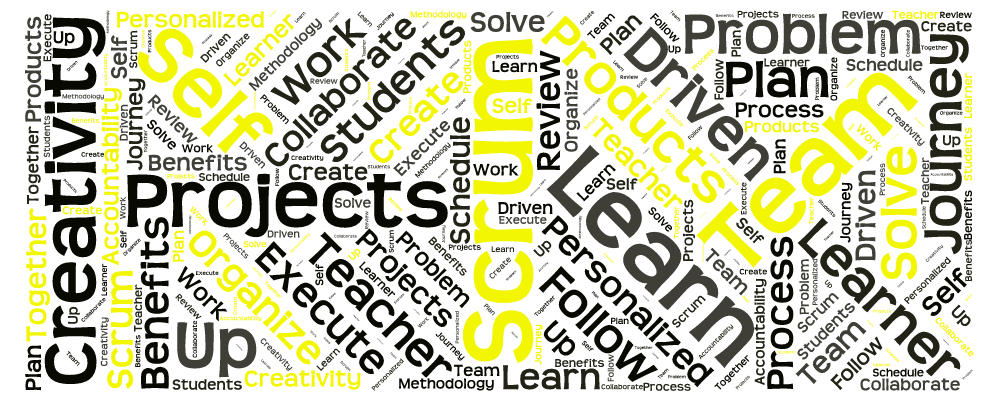“Scrum in teaching? Duh, why haven’t I thought of this earlier!”
When I came across the thought-provoking article on EdSurge by Gayle Allen describing how Scrum can be applied in k-12 education, this was my very first reaction (I highly recommend reading her article before reading this blog if you’re not familiar with Scrum methodology). After spending many years in engineering and project management, I spent the next few school years as a middle school math teacher. Those two separate experiences have led me to Education Elements - a company that helps districts design and implement personalized learning - as a platform project manager, utilizing both skillsets to impact the world of education. Given my background and my current role, I can’t believe I didn’t think of scrum in teaching sooner!
I spent some time thinking about projecting this Scrum in Education idea into a typical math class in a middle school. Here is what I came up with:
Day 0: High Level Planning - Define Sprint Scope, Schedule and Resources
-
Sprint Goal: Students Learn Linear Equations
-
Sprint Deliverables: Set of homework assignments, projects, assessments, etc.
-
Sprint Timeline: 2 weeks (8 math class days), 55 minutes per class day
-
Sprint Team: Ms. Oh and her math class students
-
Sprint Resources: Gooru lessons, e-books, etc.
Day 1: Sprint Retrospective & Sprint Planning
-
[10 mins] Ms. Oh and her students review the performance of the previous Sprint. They discuss what went well, what didn’t go so well, and how they can improve as a team. This is a chance to discuss learning delays due to fire drills, too much (or too little, if this is possible from students’ perspective) deliverables, etc. so that team can iterate on the learning process with improvements for the upcoming Sprint.
-
[10 mins] Ms. Oh introduces the current Sprint’s Goal: Learning Linear Equation. She explains to her students why learning this concept is important, how the students can use this knowledge to apply to real-world problems, and what the available learning tools are in achieving this learning goal. Ms. Oh also shares with students the key mastery points that represent the success of Sprint Goal (ex - “Know the difference between the standard form of a linear equation vs. a slope-intercept form”, “Know how to graph a linear equation with a set of coordinates and a slope information”, “Deduce the equation of a line from a given linear graph”, etc.). Ms. Oh presents key deliverables such as a set of homework assignments that students will need to turn in, either individually or as a group, during the Sprint. Ms. Oh also suggests some project ideas that students can work on in order to aid mastery of the concept.
-
[10 mins] Ms. Oh and her students divide the class into appropriate subgroups, and negotiate certain sub-group members according to learning style, personality profile and social-emotional differences. Each sub-group appoints a Scrum Master who will run the daily Scrum.
-
[20 mins] Subgroups create a Sprint board that outlines daily activities of how their learning will take place, such as online learning time, meet-with-Ms. Oh time, group project vs. individual assignment time, etc.
-
[5 mins] Subgroups review their Sprint board with Ms. Oh; together they modify the plan as needed.
Days 2-7: Sprint! Scrum Daily & Ruthlessly Learn
-
[5 mins] Scrum Time! Each subgroup starts the class by holding a daily Scrum meeting. Students discuss: (1) What they learned yesterday, (2) What they will learn today, and (3) What blocks them from learning. When Scrum Master hears any “impediments” that hinder their learning, he/she raises hand and notifies Ms. Oh, who then helps remove the impediment by changing the course of learning, by pulling a certain individual out for help, etc..
-
[45 mins] Ruthlessly Execute, I mean Ruthlessly Learn! Students learn according to their Sprint plan. Ms. Oh goes around the room to provide help where needed.
-
[5 mins] Students wrap up the daily activity, update the Sprint board, and turn in any deliverables. If their daily activities are not complete, students take the remaining activities as homework.
Day 8: Sprint Review / Showcase
-
[50 mins] Show off the team’s Sprint accomplishments! Ms. Oh provides a platform for students to demo their outcome - whether it is a subgroup exhibition or a traditional assessment.
-
[5 mins] Leave some room for celebration of finishing a Sprint!
Why “Scrummize” Your Classroom?
Great products around the world are made by the product developers who are driven to develop them along with the product development team who bring personalized skill sets. Scrum methodology helps them to execute well. Similarly, learning should be learner-driven and personalized, and I believe Scrum methodology can help this journey greatly.
Just like the software developers using Scrum methodology for development, students can greatly reap benefits from this methodology. Students can truly self-organize, collaborate, use creativity and think outside the box, problem-solve, develop higher level thinking, and learn accountability in the process.




